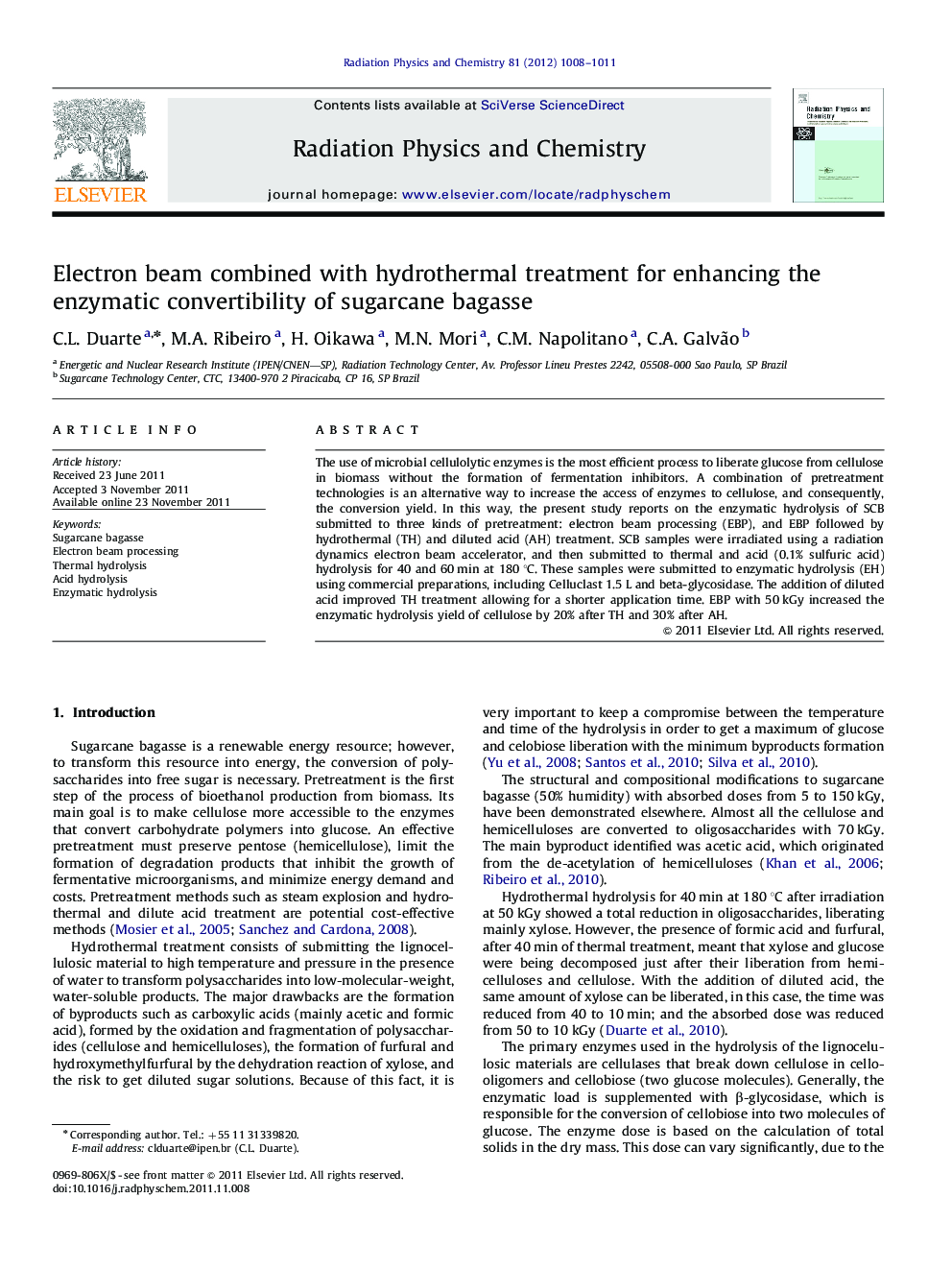| Article ID | Journal | Published Year | Pages | File Type |
|---|---|---|---|---|
| 1883947 | Radiation Physics and Chemistry | 2012 | 4 Pages |
The use of microbial cellulolytic enzymes is the most efficient process to liberate glucose from cellulose in biomass without the formation of fermentation inhibitors. A combination of pretreatment technologies is an alternative way to increase the access of enzymes to cellulose, and consequently, the conversion yield. In this way, the present study reports on the enzymatic hydrolysis of SCB submitted to three kinds of pretreatment: electron beam processing (EBP), and EBP followed by hydrothermal (TH) and diluted acid (AH) treatment. SCB samples were irradiated using a radiation dynamics electron beam accelerator, and then submitted to thermal and acid (0.1% sulfuric acid) hydrolysis for 40 and 60 min at 180 °C. These samples were submitted to enzymatic hydrolysis (EH) using commercial preparations, including Celluclast 1.5 L and beta-glycosidase. The addition of diluted acid improved TH treatment allowing for a shorter application time. EBP with 50 kGy increased the enzymatic hydrolysis yield of cellulose by 20% after TH and 30% after AH.
► We study the enzymatic hydrolysis of cellulose and hemicellulose in sugarcane bagasse. ► We study the combination of three pretreatments: electron beam processing, EBP followed by hydrothermal and by diluted acid treatment. ► The electron beam processing increased the enzymatic hydrolysis from 8% to 15% with 20 kGy. ► The enzymes used were commercial preparations, as Celluclast 1.5 L and β-glycosidase. ► The EBP with 50 kGy increased on 20% the yield of EH of cellulose after TH and 30% after AH.
